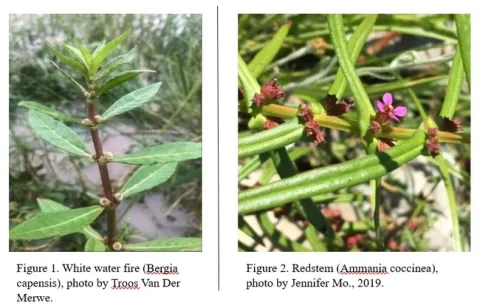Background
White water fire (Bergia capensis) was found in September of 2023, by the Butte County Agricultural Commissioner's office in a rice field in Butte County. The weed was identified by the California Department of Food and Agriculture. It is the first find of this weed in California, and possibly in the United States. It is native to Africa, southern China, and tropical Asia, and it is known to be in rice fields in Europe, Central and South America, as well as the Caribbean. It was likely transported in seed to rice-growing areas and has been established in those locations for many years.
In Butte County, the weed was only found in one rice field, and the Agricultural Commissioner's office surveyed surrounding rice fields but found no additional infestations. The method of introduction in California is unknown at this point.
It currently has a “Q” rating by CDFA: “An organism or disorder suspected to be of economic or environmental detriment, but whose status is uncertain because of incomplete identification or inadequate information”. At this point, it is not considered a quarantinable pest so if it is found, there is no penalty or restriction for finding it in a field.
Identification
White water fire looks similar to another common rice field weed, redstem (Ammania spp). However, the two species are not from the same plant family and are therefore not closely related. Due to the similarity, white water fire is quite difficult to identify in the field. One of the key distinctions is the thickness of the leaves, which are much broader in white water fire than in redstem. Another key distinction is flower color. The flower color of white water fire is white, whereas redstem can have either purple or red flowers.


